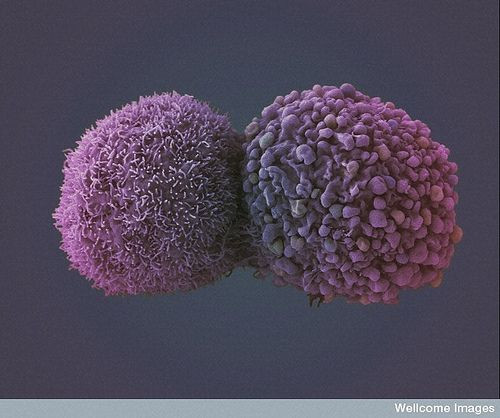Gene Mutation Prediction In Non-Smoking Lung Cancer Patients Could Mean Greater Survival Rates

Scientists say they’ve found a gene mutation that, while raising a woman’s risk for lung cancer, simultaneously increases both sexes’ chances of survival with the cancer if they do not smoke.
The gene, which protects cells from oxidative stress, is four times more likely to appear in women than in men, according to researchers from RIKEN Center for Life Science Technologies in Japan, whose study appeared in the journal PLoS One. The study is the first of its kind to associate the gene, a -617A mutation in the NFR2 gene, with increased chances for lung cancer survival.
Both men and women saw increased chances for survival, despite women being the only gender to see increased risk for the cancer. Researchers analyzed the DNA of non-smoking lung cancer patients in Japan to investigate the gene’s properties, ultimately finding that the mutation could serve as a “good prognostic biomarker for the assessment of the overall survival chances of patients with adenocarcinomas a good prognostic biomarker for practical cancer therapy” along with acting as a “practical tool for personalized cancer therapy,” according to researcher Dr. Toshihisa Ishikawa.
The findings are particularly salient for their applications in managing one of the world’s leaders in cancer deaths, as lung cancer causes 23 percent of all cancer-related deaths and is the leading worldwide cause of cancer death among males. (In females, breast cancer is the most common.) Smoking accounts for up to 90 percent of lung cancers in the United States, according to the Centers for Disease Control and Prevention.
Among non-smokers, lung cancer occurs in approximately 10 percent of the population. Several risk factors other than smoking have been implicated in producing the greater risk:
- Secondhand smoke: Each year, an estimated 3,000 passive smokers contract lung cancer as a result of sharing a living space or work environment with people who smoke. Non-smokers face a 24 percent greater risk for lung cancer if they reside with a smoker.
- Radon: An estimated 12 percent of all lung cancer cases are due to inhalation of the naturally occurring gas, which is formed from decaying uranium and affects up to 15 percent of households. Radon test kits can detect which homes have radon-emitting pipes, drains, or gaps in the house’s foundation.
- Asbestos: While asbestos is banned from its typical use in insulation in the United States and other countries, inhaling asbestos particles increases a non-smoker's risk of lung cancer by fivefold.
- Genes: Since not all smokers get lung cancer, numerous studies have sought to determine what role heredity plays in passing on lung cancer risk to descendants. RIKEN’s study helps resolve that mystery in part.
- Air Pollution: The gases emitted by cars, airplanes, trains, factories, and power plants contribute to an estimated 2,000 cases of lung cancer each year. In China, where air pollution has reached epidemic levels, lung cancer risks are two to three times higher in cities than in the countryside, even though smoking rates are the same.
“One of the challenges in lung cancer management is to identify biomarkers for personalized cancer therapy. To effectively advance personalized medicine, cost-effective methods should be developed for genotyping,” the RIKEN researchers concluded. “The method enables the detection of genetic polymorphisms in target genes within 30 to 45 minutes under isothermal conditions that do not require DNA isolation and PCR amplification.”
Thus, “this genotyping method would provide a simple and practical tool for personalized cancer therapy and assessment of prognosis," they argued.
Source: Okano Y, Nezu U, Enokida Y. SNP (–617C>A) in ARE-Like Loci of the NRF2 Gene: A New Biomarker for Prognosis of Lung Adenocarcinoma in Japanese Non-Smoking Women. PLoS One. 2013.



























